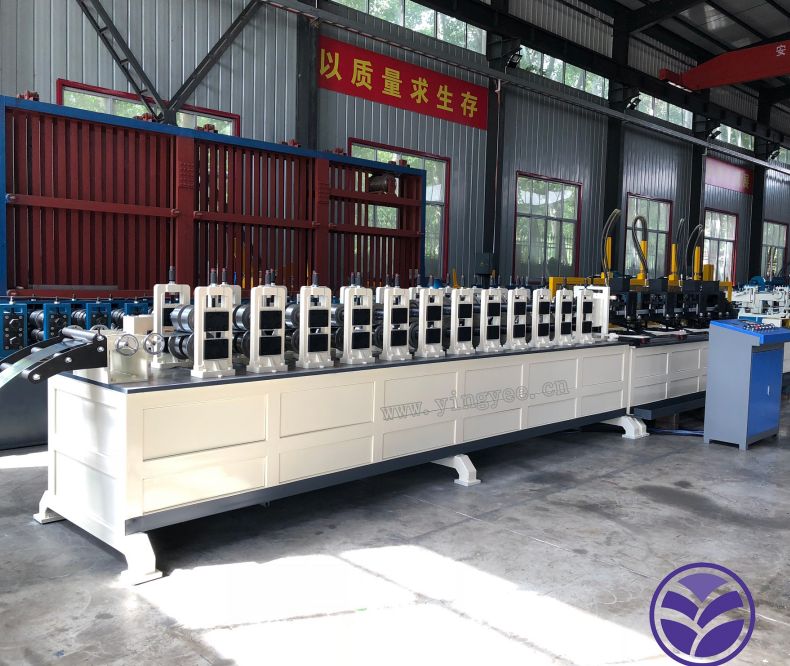
The Evolution and Importance of Roof Panel Forming Machines
In the construction and manufacturing industry, efficiency and precision are paramount, particularly when it comes to producing components like roof panels. Roof panel forming machines have emerged as vital equipment in this domain, revolutionizing how roof panels are created for various structures, including residential homes, commercial buildings, and industrial facilities. This article will explore what roof panel forming machines are, their key features, the manufacturing process, and their significance in modern construction.
What is a Roof Panel Forming Machine?
A roof panel forming machine is specialized equipment used to manufacture metal roof panels. These machines take flat sheets of metal, usually stainless steel, aluminum, or galvanized steel, and shape them into corrugated or flat panels that are durable, weather-resistant, and aesthetically pleasing. The finished panels are crucial for providing structural support and protection against environmental elements.
Key Features of Roof Panel Forming Machines
1. Precision Engineering Roof panel forming machines are designed for high precision, ensuring that each panel is produced to exact specifications. High tolerances can significantly influence the effectiveness of the roof system and the overall integrity of the structure.
2. Customization Many machines offer customizable options, allowing manufacturers to produce panels of varying sizes, thicknesses, and profiles. This flexibility can cater to specific architectural requirements or local building codes.
3. Automation Modern roof panel forming machines often feature automation, which reduces labor costs and increases productivity. Automated systems can manage the entire process—from feeding the metal sheets to cutting and shaping them, all while ensuring consistent quality.
4. Speed The ability to produce large quantities of roof panels in a short amount of time is crucial for meeting project deadlines. Advanced machines can form panels rapidly without compromising on quality.
5. Material Versatility Roof panel forming machines are adaptable to different materials, allowing manufacturers to work with various types of metal and coatings, enhancing the aesthetics and durability of the panels.
The Manufacturing Process
The manufacturing process for roof panels typically involves several critical steps
1. Material Preparation The process begins with selecting the appropriate metal sheets, which are cut to the required lengths and prepared for forming.

2. Feeding and Forming The metal sheets are fed into the forming machine, where they are manipulated through a series of rollers. This step shapes the sheet into the desired profile—be it a corrugated, standing seam, or flat panel.
3. Cutting Once the panels are formed, they are cut to specified lengths. This step is often automated to maintain precision and consistency.
4. Finishing After cutting, the panels may undergo additional treatments, such as painting or coating, to enhance their durability and weather resistance.
5. Quality Control Before the panels are packaged and shipped, they undergo stringent quality control checks to ensure they meet industry standards and specifications.
The Importance in Modern Construction
Roof panel forming machines play a crucial role in the construction industry. Their significance can be observed in several key areas
1. Efficiency and Cost-Effectiveness By streamlining the production of roof panels, these machines reduce labor costs and minimize waste, leading to overall cost savings for manufacturers and builders.
2. Quality and Consistency The precision of the forming process ensures that panels are uniform, reducing the risk of installation issues and enhancing the overall quality of the roofing system.
3. Sustainability Modern machines often produce less waste and use recyclable materials, contributing to sustainable construction practices. By utilizing eco-friendly materials, the overall environmental impact is reduced.
4. Aesthetic Variety With customizable features, manufacturers can create panels that meet aesthetic demands while maintaining functionality, catering to modern architectural styles and preferences.
Conclusion
As the construction industry continues to evolve, roof panel forming machines stand out as indispensable tools that enhance efficiency, quality, and sustainability. Their capacity to produce high-quality roofs that meet diverse architectural demands ensures their role in the future of building design and construction remains vital. As technology advances, we can expect further innovations in roof panel forming machinery, solidifying their importance in the quest for modern, efficient, and beautiful architectural solutions.